AI Pest Identification vs. Traditional Methods
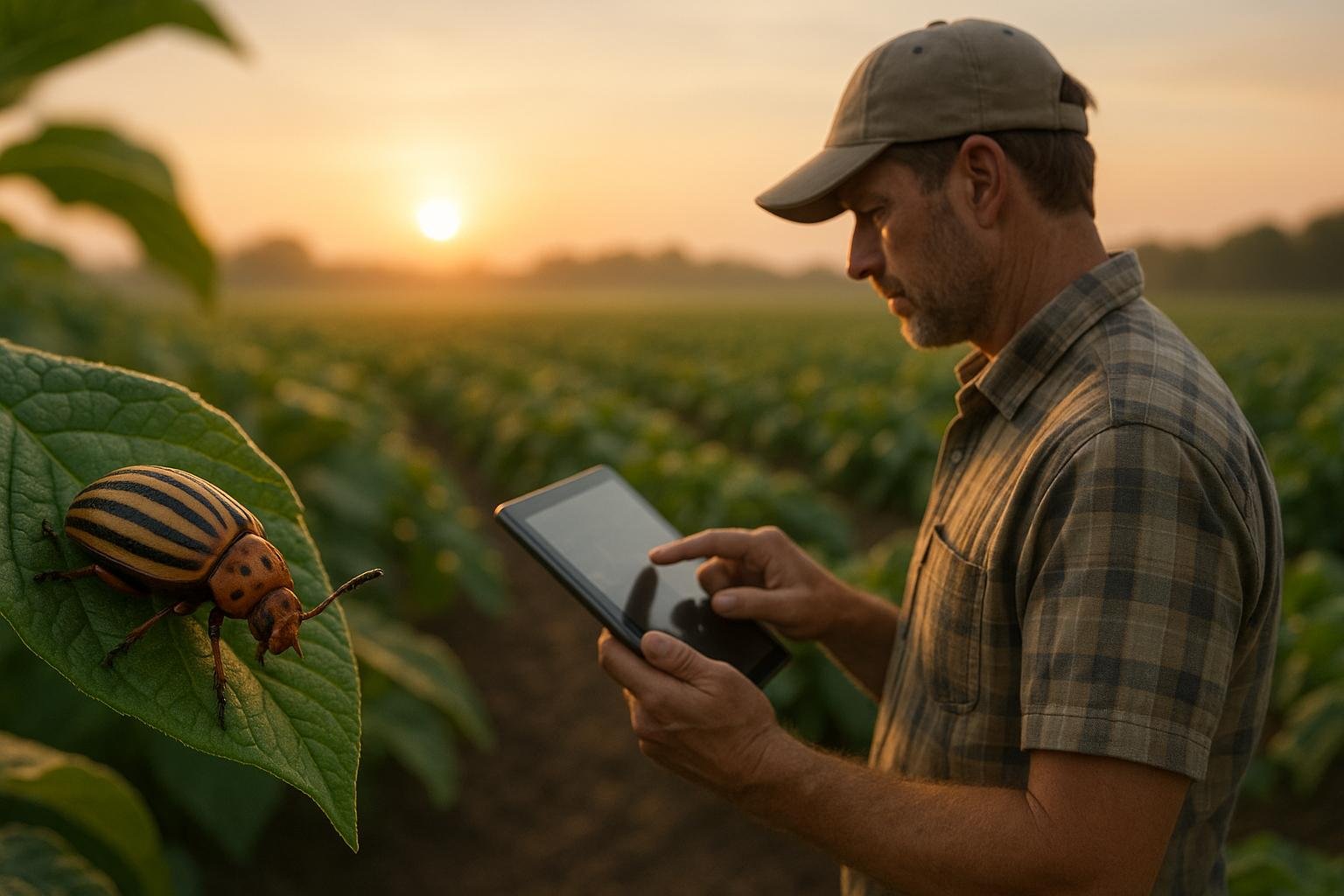
AI pest identification is changing how we manage pests in gardens and farms. It’s faster, more accurate, and better for the environment compared to manual methods. Here's a quick breakdown:
- AI systems use cameras, sensors, and machine learning to identify pests with up to 96% accuracy, saving time and reducing chemical use by up to 90%.
- Manual methods rely on human inspections, which are slower, less precise, and often lead to overuse of pesticides.
Quick Comparison
| Factor | AI Methods | Manual Methods |
|---|---|---|
| Accuracy | Up to 96% with real-time alerts | Limited by human error |
| Speed | Instant, continuous monitoring | Slower, periodic inspections |
| Cost | High upfront, lower long-term costs | Lower upfront, higher labor costs |
| Environmental Impact | Reduced chemical use (up to 90%) | Higher risk of overuse |
| Coverage | Large areas monitored simultaneously | Limited to inspected areas |
AI systems, like Trapview and FarmSense, are already helping farmers cut pest-related crop losses and reduce pesticide use. While AI requires an initial investment, it offers long-term benefits in efficiency, cost savings, and environmental protection. Manual methods may still work for small-scale gardens but can’t match AI’s precision and speed.
If you’re managing pests, AI could be the smarter choice for better results and less environmental harm.
How AI and Manual Methods Compare
How Each Method Works
AI systems combine advanced tools like cameras, sensors, and algorithms to collect and analyze real-time data - everything from thermal signatures to acoustic signals. This creates a robust pest detection system that works well for both small-scale gardens and sprawling farmlands. AI doesn’t just monitor; it evaluates environmental factors and pest behaviors in real time, offering a dynamic, scalable solution.
On the other hand, traditional manual methods depend heavily on human expertise and visual inspections. The table below highlights the key differences between these two approaches:
| Aspect | AI Methods | Manual Methods |
|---|---|---|
| Data Collection | Continuous monitoring with sensors, cameras, and thermal imaging | Periodic visual inspections |
| Analysis Speed | Real-time processing of multiple data points | Slower, individual assessments |
| Coverage Area | Monitors entire fields simultaneously | Limited to physically inspected areas |
| Detection Type | Multi-spectrum analysis (visual, thermal, acoustic) | Primarily visual observation |
Speed and Success Rates
AI’s efficiency translates into quicker, more dependable pest detection. For instance, the Tamil Nadu Agricultural University reported a 93.47% validation accuracy when using AI to detect fall armyworm infestations in maize crops. Other AI systems have also achieved impressive accuracy levels:
- Sound-based detection using acoustic sensors: 99.78% accuracy
- Greenhouse pest identification (YOLOv5 model): 96% accuracy for common pests
- Field detection with CNN models: 93% accuracy for specific pest species
These results highlight why AI is becoming a trusted tool in pest management.
User Experience and Growth Potential
For large-scale operations, automated AI systems excel in rapidly analyzing pest data, enabling swift action. In contrast, manual pest identification requires years of hands-on experience to master. One of AI’s strengths is its ability to work alongside humans rather than replace them entirely. Human oversight remains essential to verify AI-generated results, ensuring accuracy and reliability.
This stark difference in operation lays the groundwork for examining how these methods impact costs and resource allocation.
Cost and Resource Effects
Effects on Garden Health
AI is transforming how gardens are managed, especially when it comes to reducing pesticide use and protecting beneficial insects. Take Blue River Technology's smart sprayer, for example - it can cut herbicide usage by up to 90%. This not only minimizes chemical exposure but also helps maintain healthier soil and preserves the insects that are vital for a balanced ecosystem.
AI-driven systems also contribute to a healthier environment in several ways:
| Impact Area | AI-Driven Systems | Traditional Methods |
|---|---|---|
| Pesticide Usage | Targeted application, up to 90% reduction | Broad-spectrum application |
| Soil Health | Minimal chemical residue | Higher soil contamination risk |
| Beneficial Insects | Preserved through precise targeting | Often harmed by broad treatments |
| Water Usage | Optimized through smart irrigation | Variable efficiency |
| Long-term Effects | Encourages ecosystem balance | Risk of pest resistance |
These benefits show how AI can create a more sustainable approach to gardening and farming, paving the way for a deeper look into the financial aspects.
Cost Analysis
Adopting AI systems comes with a notable upfront cost. For instance, software and development expenses can range from $100,000 to $300,000, while equipment costs fall between $30,000 and $100,000. However, these investments often pay off in the long run by reducing resource usage and labor expenses.
Here's a breakdown of typical costs:
| Investment Category | Cost Range |
|---|---|
| AI Software & Development | $100,000 - $300,000 |
| Equipment & Tools | $30,000 - $100,000 |
| Initial Inventory & Supplies | $20,000 - $50,000 |
| Licenses and Insurance | $10,000 - $30,000 |
There are also ongoing expenses, like annual upgrades costing up to $20,000 and licensing fees that can run about 10% of revenue. For example, FarmSense’s pest-monitoring platform uses sensors and AI to recommend precise pest control strategies, significantly cutting down on unnecessary pesticide use.
The economic potential of AI in agriculture is immense. The market is expected to grow from $1.7 billion in 2023 to $4.7 billion by 2028. Meanwhile, pest-related crop losses currently cost the global economy a staggering $290 billion each year. AI systems can help mitigate these losses by preventing up to 25% of crop damage due to weather and reducing food waste by as much as 30% through better storage solutions.
These combined benefits highlight how AI not only improves garden health but also delivers substantial cost savings for those who invest in these technologies.
Current Uses of AI Pest Detection
Smart Garden Management
AI is reshaping how we approach garden management, making it smarter and more efficient. Take the Plant Village mobile app, for instance. Developed by Penn State University, this app lets users identify pests and diseases simply by uploading images. It's a handy tool that highlights how AI can support both organic and conventional gardening practices.
Professional tools like Agrobase take pest management a step further with features designed for precision and ease of use. Here's a quick look at what it offers:
| Feature | Benefit |
|---|---|
| Regional Pest Alerts | Provides early warnings about local pest threats |
| Comprehensive Pest Profiles | Helps identify pests and suggests organic treatment options |
| Weed Identification | Spots invasive species that may harm crops |
| Pesticide Database | Offers guidance on treatments that align with sustainable practices |
These tools underscore how AI-driven solutions are consistently delivering reliable results in real-world applications.
Connection with Other Garden Tech
AI doesn't just work in isolation - it integrates seamlessly with other garden technologies, creating a network of tools that can tackle pest problems more effectively. A great example is the Trapview system by EFOS Ltd., which uses IoT-enabled traps equipped with cameras and sensors to monitor pest activity in real time. This setup allows for quick action when new threats arise.
Here’s how AI teams up with other garden tech:
| Technology | Purpose | Impact |
|---|---|---|
| Soil Moisture Sensors | Tracks conditions that attract pests | Reduces environments conducive to pest infestations |
| Temperature Monitors | Monitors environmental factors | Helps predict when pests are most active |
| Smart Cameras | Provides continuous surveillance | Ensures 24/7 pest monitoring |
| Weather Stations | Gathers climate data | Supports models that predict pest behavior |
The StrongEcho Gardening App is another standout example. It combines data from various sources - like soil conditions, weather patterns, and pest images - to create a well-rounded pest management strategy. On the commercial side, Trapview has proven effective in orchards and vineyards, where it helps growers monitor pest populations and take action precisely when needed. This targeted approach minimizes the use of broad-spectrum pesticides while still ensuring crops remain protected.
🚀 Ready to Reinvent Your Garden?
Join thousands of homeowners who have transformed their gardens using our AI design tool. Upload one photo to explore endless possibilities.
Get your AI garden designs →What's Next for AI Pest Detection
New AI Detection Features
AI pest detection is evolving to combine multiple data sources for improved accuracy. Advanced machine learning models now integrate visual recognition with environmental data, enabling more precise pest identification and prediction.
For instance, FarmSense's platform collects both insect and environmental data, processes it in the cloud, and delivers targeted pest management strategies tailored to specific needs.
Here’s a glimpse of how emerging AI features are reshaping pest management:
| Feature | Current Capability | Future Enhancement |
|---|---|---|
| Visual Recognition | 96% accuracy across 2,500 species | Incorporation of thermal and infrared imaging |
| Data Processing | Analysis of individual data streams | Multi-sensor fusion for deeper insights |
| Treatment Planning | Basic pest control recommendations | Personalized, climate-sensitive solutions |
| Monitoring Range | Limited coverage | Comprehensive ecosystem-level analysis |
A striking example of this progress is the collaboration between Semios and Google, which successfully reduced moth populations by 1.5 billion and increased almond yields.
"Because of climate change, the outbreaks of existing pests are increasing or they become the main pests in areas where they did not cause problems before." – M. Demirel and N.A. Kumral
These advancements are not just technical milestones - they’re practical tools for professionals in pest management.
Benefits for Garden Professionals
Gardeners and landscapers are already reaping the rewards of these AI innovations. By integrating smart sensors with AI, herbicide use has been cut by up to 90%. Blue River Technology’s smart sprayer system, for example, uses image-based pattern recognition to differentiate between crops and weeds, allowing precise spraying and reducing chemical waste. Similarly, Solinftec's Solix Ag Robotics solutions offer continuous protection by targeting early-stage weeds and managing pests with specialized light wavelengths.
These developments are shaping a future where gardens - whether professional or personal - can be managed more efficiently and sustainably. AI pest detection is making smarter, eco-friendly gardening a reality.
sbb-itb-4d6a8dd
Revolutionize Your Garden with AI Driven Pest Identification

Conclusion: Making the Best Choice
Deciding between AI and traditional pest management methods comes down to weighing your specific needs and priorities. AI-powered systems can cut herbicide use by up to 90% while maintaining effectiveness.
Here’s a quick side-by-side look:
| Factor | AI-Driven Systems | Traditional Methods |
|---|---|---|
| Accuracy | 24/7 monitoring with real-time alerts | Limited by human availability |
| Cost Efficiency | Higher upfront investment, lower long-term costs | Lower initial costs, higher ongoing labor expenses |
| Environmental Impact | Up to 90% reduction in chemical use | Varies based on application methods |
| Detection Speed | Instant, with predictive capabilities | Depends on inspection frequency |
| Coverage Area | Monitors large areas comprehensively | Limited by manual inspection capacity |
This comparison highlights how AI outshines traditional methods in several key areas. For instance, AI's ability to deliver continuous, real-time monitoring and precision pest control makes it especially effective for large-scale operations. One notable example is the collaboration between Semios and Google, which boosted almond production by efficiently managing moth populations.
"It is necessary to monitor the pest in the field, determine the most sensitive stage of pests, decide on the most appropriate control tactic (pesticide or other alternative methods) and apply it in the best time… Consequently, IPM requires intensive field observation, trained staff, and data mining." - M. Demirel and N.A. Kumral
Your choice should align with your operation's size, budget, and technical expertise. While AI systems demand an initial investment and some technical know-how, they deliver long-term advantages in accuracy, cost savings, and environmental impact. On the other hand, traditional methods may suit smaller setups where manual inspections are feasible.
Incorporating AI into pest management opens the door to smarter, more efficient, and eco-friendly practices.
FAQs
What are the upfront costs of using AI pest identification systems, and how do they compare to long-term savings?
AI pest identification systems come with a hefty upfront price tag, typically ranging from $50,000 to $500,000. The cost depends on factors like the complexity of the technology, which may include advanced sensors and sophisticated software. This initial investment covers everything from development to installation and system integration.
However, the long-term benefits often outweigh these initial expenses. By automating pest detection, these systems cut down on the need for manual inspections, boost accuracy, and allow for quicker responses to pest problems. Over time, this leads to lower labor costs, increased productivity, and reduced overall operational expenses. While the upfront costs might seem intimidating, the potential savings and efficiency gains make these systems a worthwhile investment for many businesses.
How does AI pest identification reduce environmental impact compared to traditional methods?
🎨 Visualize Your Dream Garden Today!
Transform any outdoor space into a professional landscape design in minutes. Just upload a photo, choose your style, and let our AI do the rest.
Start your garden transformation now →How AI Pest Identification Reduces Environmental Impact
AI pest identification is changing the game when it comes to managing pests while being kinder to the environment. Traditional pest control methods often involve blanket pesticide applications, which can harm non-target species and disrupt ecosystems. AI, on the other hand, allows for early detection of infestations and provides recommendations for precise, targeted treatments. This approach reduces the reliance on chemicals, safeguards beneficial species, and helps preserve the natural balance.
What’s more, AI tools can assess environmental conditions to predict pest behavior. This means treatments are applied only when truly needed, avoiding unnecessary chemical exposure. By combining precision with eco-conscious practices, AI-driven pest management is paving the way for more sustainable farming methods.
How can AI pest identification systems enhance garden management when integrated with other technologies?
AI pest identification systems are transforming garden management by working hand-in-hand with other advanced technologies. These systems use real-time monitoring through sensors and cameras to detect pests early, enabling quick action and targeted pest control. The result? Less crop damage and a reduced reliance on chemical pesticides.
When paired with tools like smart irrigation systems and automated gardening devices, AI creates a fully connected gardening ecosystem. This setup not only optimizes resource usage but also supports environmentally friendly practices. On top of that, AI's ability to predict pest outbreaks allows gardeners to prepare in advance, ensuring healthier plants and boosting garden productivity.
Related posts
Related Articles

Mastering Garden Color Theory: Enhance Your Outdoor Space
Explore the essentials of garden color theory to create a visually stunning and harmonious garden. Learn about color schemes, color psychology, and practical tips for vibrant garden design.
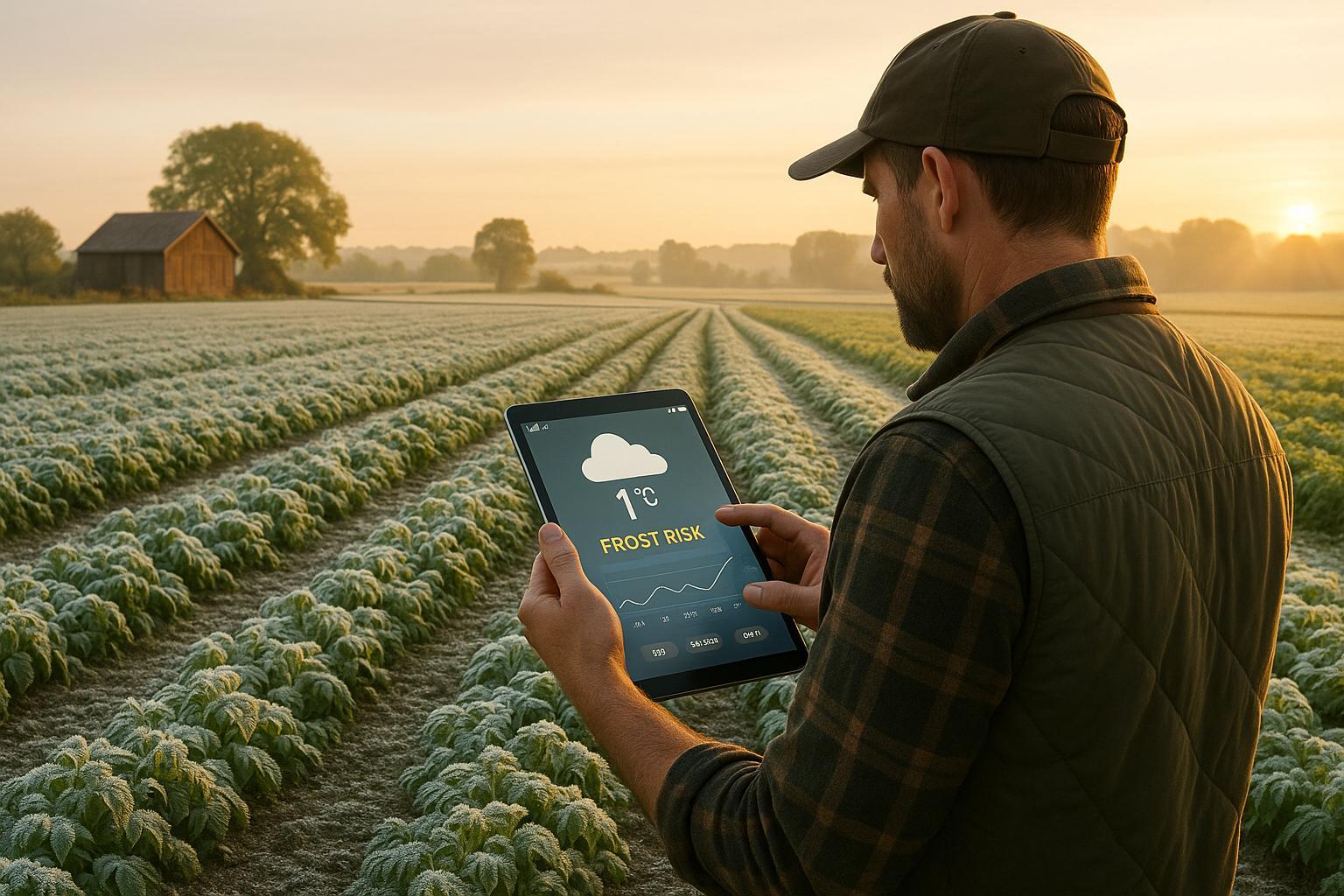
How AI Predicts Frost Risks for Seasonal Planting
AI enhances frost prediction for farmers, allowing for precise planting schedules and reduced crop losses through actionable insights.
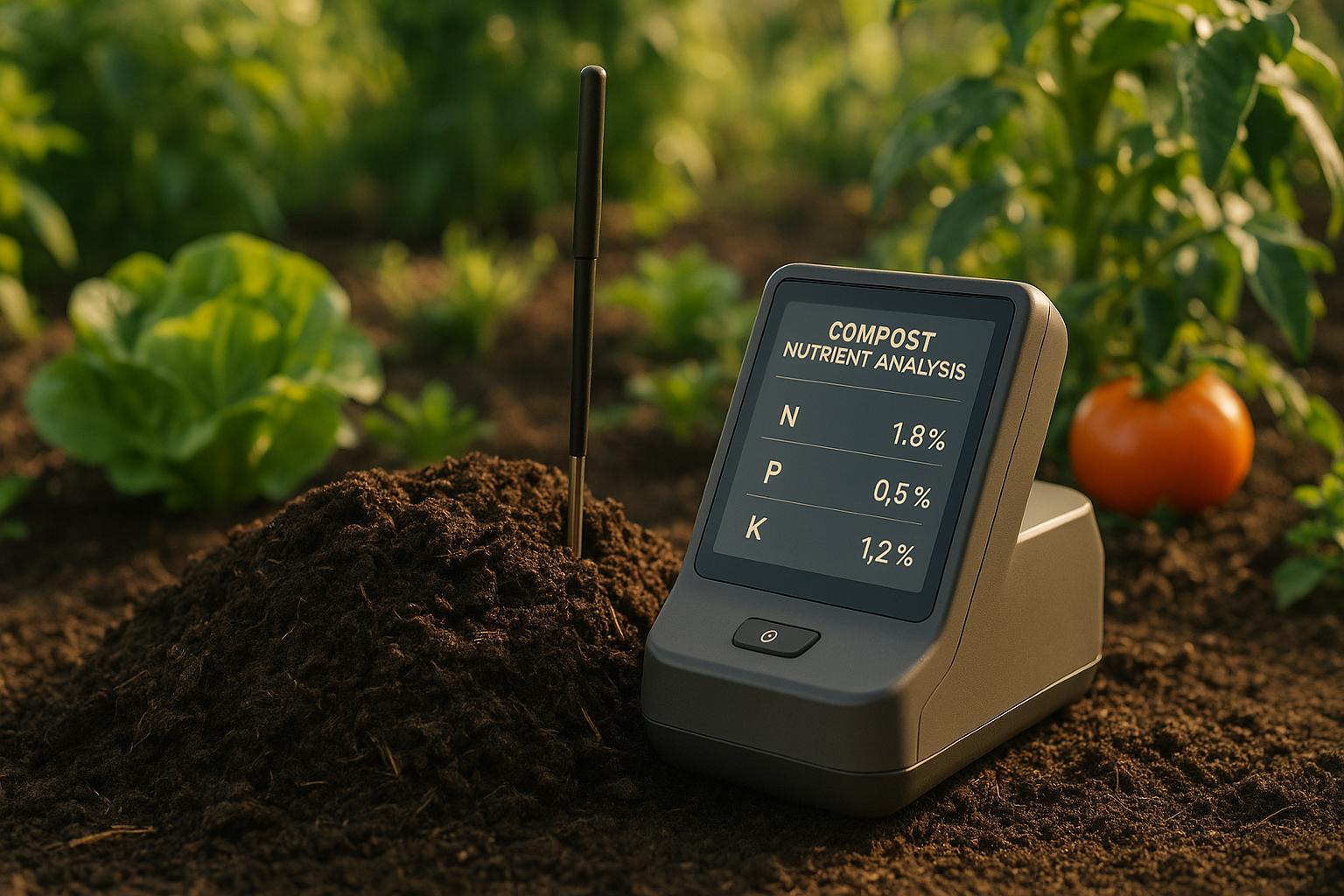
AI Tools for Compost Nutrient Analysis
Explore AI tools that enhance compost nutrient analysis, offering faster, accurate insights for gardeners and farmers at all levels.
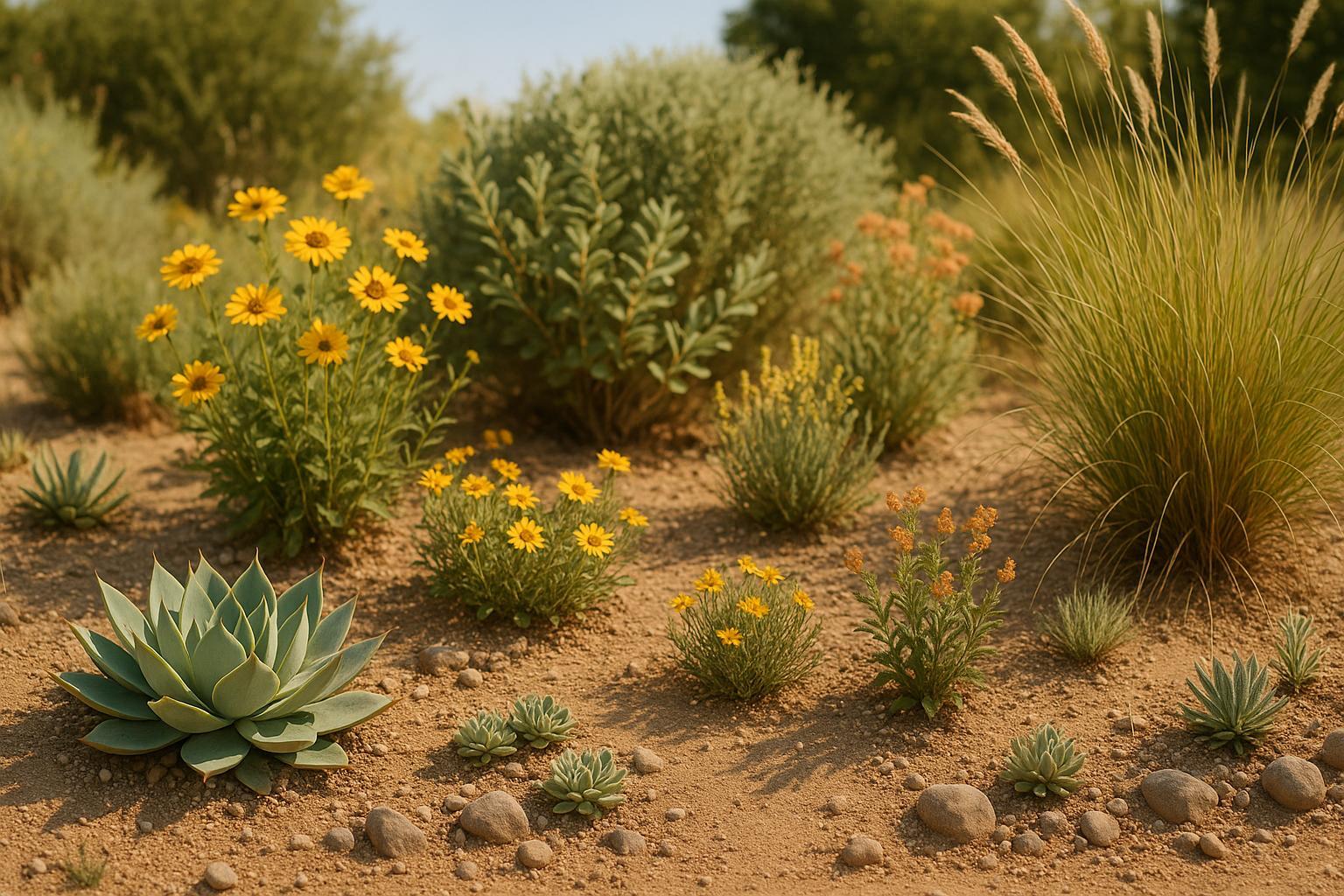
How AI Recommends Drought-Tolerant Native Plants
Explore how AI tools can help you select drought-tolerant native plants tailored to your garden's unique conditions and promote sustainable gardening.
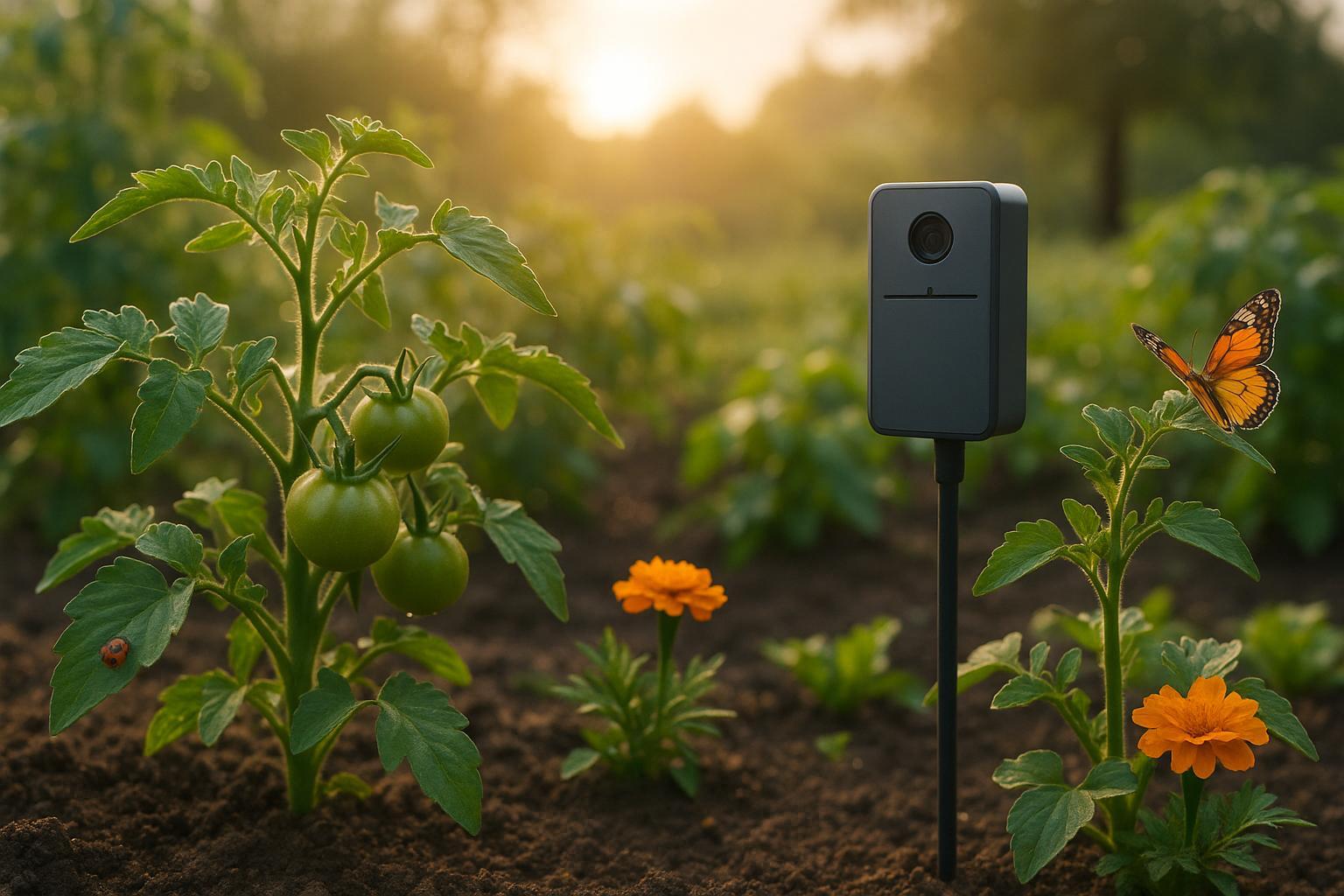
AI Pest Control: How Algorithms Detect Threats
Explore how AI is transforming pest control through early detection, eco-friendly solutions, and accessible tools for all gardeners.

Natural Wood Treatments for Sustainable Garden Design
Explore eco-friendly wood treatments for gardens, from tung oil to milk paint, and find the best options for your sustainable garden design.